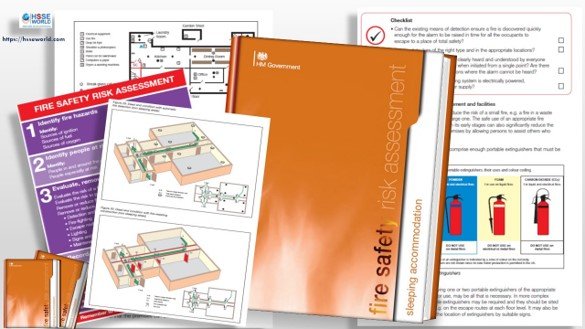
“Given the current landscape of the workforce, a company’s ability to focus on an active shooter or workplace violence incident is absolutely paramount,” says Juliette Kayyem, CEO of Zemcar. “Moving forward, leading organizations need to ensure the safety of employees by bringing these policies into the workplace and putting them into practice, much like how fire drills are already a regular event for employees.”
While workplace violence statistics often are underreported, the numbers that are available only demonstrate that it is far more prevalent.
The most recent data available estimates that more than 2 million people are victims of a workplace violence incident each year. The FBI states that 80 percent of all active shooting incidents happen on the job. However, many employers still remain unprepared. EHS professionals and employers can create a secure workplace through training workers to recognize the signs of a disgruntled employee as well as having a solid emergency response plan in place should an act of violence occur.
Causes
The most common types of workplace violence vary by industry, but can be broken down into four parts (See “Types of Workplace Violence”). The FBI provides detailed information about the different occurrences on its website and published resources.
The U.S. workforce spends on average about one-third of their life in the workplace, according to numerous studies. So, knowing your coworkers and surroundings is crucial to preventing a workplace violence incident.
“Employees typically know when something is ‘off’,” says Vic Merjanian, founder and CEO of Titan HST. “Common warning signs in individuals are increased aggression, harassment towards customers or employees, concealment of a weapon and interpersonal conduct that doesn’t fit the setting.” It is also important to be wary of biases an individual may possess and to ensure that the perceived threat is based on objective criteria, he adds. Workplace safety is ever evolving, and communicating threats as well active situations is key to sending workers home safe every day.
Communication
A survey conducted by Rave Mobile Safety shows the need for effective communication in workplace violence incidents.
More than half of Millennial respondents (53%) said they were unaware of their company’s emergency plans or that their employer had no plan in place. Only 34% of respondents aged 45 and older indicated the same.
In addition, the survey discovered that only half of those 45 and older were “very likely” to report an issue when it comes to worker safety, and just 8% of Millennials surveyed said the same.
Facilitating the right communications methods is an essential step.
“Initiating quick, direct and informative communication is essential,” Merjanian says. “Being able to share what the threat looks like, where the threat is located and any other pertinent details is always helpful to emergency responders.”
When it comes to technology, employers should ensure workers have proper cellular access and Wi-Fi connection to facilitate calls should an emergency occur. Emergency applications can be downloaded on smartphones to communicate more directly across the employee network, notify emergency responders and download lifesaving resources such as CPR and first aid instructions.
When it comes to protecting both the workplace and employees, installing security cameras in vulnerable building access points such as loading docks, shipping and receiving entrances, parking garages, or main entrances can deter criminal activity, says Amy Harper, senior director of workplace strategy and consulting operations at the National Safety Council (NSC). Harper adds that employers have recognized the need to address workplace violence and set up policies to address this through employee training, conducting mock training exercises, adopting a zero-tolerance policy toward workplace violence and creating an emergency action plan.
Making a Plan
Emergency response plans should be clear and direct with how workers should react or handle a situation. These plans should include proper procedures for assessing, documenting and acting on potential threats, Merjanian says.
“Unfortunately, we find that many workplaces do not have any plans in place, or have plans that are very outdated and do not address the threats that employees may encounter in today’s workplace,” he says.
When it comes to documentation, companies should have written protocols for terminations and demotions/job changes of workers that identify potential security and employee safety concerns in order to mitigate those, Harper says.
Security badges as well as badge-based permissions should be made available to ensure only approved workers are able to access the facility or any restricted areas.
“Contractor management programs help account for any non-employee presence onsite and having protocols for contractors to “check in” upon arrival ensures they are expected and have approval to provide services,” Harper says. When a threat or incident occurs, a structured response needs to take place in order to keep workers safe.
“Once a threat is identified, the question becomes — do we contain the threat, assuming we can, or do we advise employees and customers to initiate a lockdown?” Merjanian says. The first step workers should take is to immediately contact security or law enforcement. Then, employees can move coworkers, themselves, and any potential customers in to a safer place if they are able to, he says.
“It is generally not advisable to approach the threat,” Merjanian says. “If you do see a weapon and decide the only option is to approach the threat, the employee must make sure to commit to their actions and not hesitate.”
In an active situation, the best advice is to stay calm and exercise one of three options: run, hide or fight, Harper says (See “Run, Hide, Fight”).
“Some people commit violence because of revenge, robbery or ideology – with or without a component of mental illness,” Harper says. “There is no way of knowing when an attack is imminent. So it’s important to be vigilant and alert, and to have prepared ahead of time, being sure to train employees on appropriate responses.”
_____________________________
Types of Workplace Violence
TYPE 1: Violent acts by criminals who have no other connection with the workplace other than to enter to commit robbery or another crime.
Type 1 violence by criminals otherwise unconnected to the workplace accounts for the vast majority—nearly 80% —of workplace homicides. In these incidents, the motive is usually theft, and in a great many cases, the criminal is carrying a gun or other weapon, increasing the likelihood that the victim will be killed or seriously wounded. This type of violence falls heavily in industries where workers’ jobs make them vulnerable: taxi drivers such as late-night retail or gas station clerks, and others who are on duty at night, who work in isolation.
TYPE 2: Violence directed at employees by customers, clients, patients, students, inmates, or any others for whom an organization provides services.
Type 2 cases typically involve assaults on a worker by a customer, patient or someone else receiving a service. In general, the violent acts occur as workers are performing their normal tasks. In some occupations, dealing with dangerous people is inherent in the job, as in the case of a police officer, correctional officer, security guard, or mental health worker. For other occupations, violent reactions by a customer or client are unpredictable, triggered by an argument, anger at the quality of service or denial of service, delays, or some other precipitating event.
TYPE 3: Violence against coworkers, supervisors, or managers by a present or former worker.
TYPE 4: Violence committed in the workplace by someone who doesn’t work there, but has a personal relationship with an employee—an abusive spouse or domestic partner.
Type 3 and Type 4 violence comprise of incidents involving violence by past or present employees and acts committed by domestic abusers or arising from other personal relationships that follow a worker into their place of employment. Violence in these categories is no less or more dangerous or damaging than any other violent act. When the violence comes from a worker or someone close to that worker, there is a much greater chance that some warning sign will have reached the employer in the form of observable behavior.
Source: U.S. Department of Justice, Federal Bureau of Investigation
_____________________________
Run, Hide, Fight
RUN—If there is an accessible escape path, attempt to evacuate the premises. Be sure to:
• Have an escape route and plan in mind
• Evacuate regardless of whether others agree to follow
• Leave your belongings behind
• Help others escape, if possible
• Prevent individuals from entering an area where the active shooter may be
• Keep your hands visible
• Follow the instructions of any police officers
• Do not attempt to move wounded people
• Call 911 when you are safe
HIDE—If evacuation is not possible, find a place to hide where the active shooter is less likely to find you. Your hiding place should:
• Be out of the active shooter’s view
• Provide protection if shots are fired in your direction (i.e., an office with a closed and locked door)
• Not trap you or restrict your options for movement
To prevent an active shooter from
entering your hiding place:
• Lock the door
• Blockade the door with heavy furniture is nearby:
• Silence your cell phone and/or pager
• Turn off any source of noise (i.e., radios, televisions)
• Hide behind large items (i.e., cabinets, desks)
• Remain quiet
If evacuation and hiding out are not possible:
• Remain calm
• Dial 911, if possible, to alert police to the active shooter’s location
• If you cannot speak, leave the line open and allow the dispatcher to listen
FIGHT—As a last resort, and only when your life is in imminent danger, attempt to disrupt and/or incapacitate the active shooter by:
• Acting as aggressively as possible against him/her
• Throwing items and improvising weapons
• Yelling
• Committing to your actions
Source: National Safety Council



